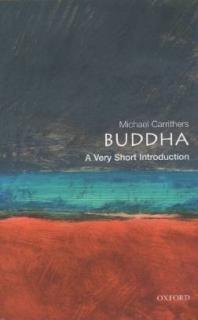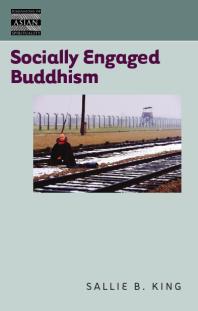
 Britannica Encyclopedia of World Religions
by
Encyclopaedia Britannica Publishers
Religious faith takes many forms. Throughout the centuries and around the globe, the human response to the divine has given rise to a large number of important religions. This encyclopedia provides an authoritative and comprehensive guide to the religions of the world and to the concepts, people and events that shaped them.
Britannica Encyclopedia of World Religions
by
Encyclopaedia Britannica Publishers
Religious faith takes many forms. Throughout the centuries and around the globe, the human response to the divine has given rise to a large number of important religions. This encyclopedia provides an authoritative and comprehensive guide to the religions of the world and to the concepts, people and events that shaped them.
 The Buddha
by
Michael Carrithers
Michael Carrithers guides us through the complex and sometimes conflicting information that Buddhist texts give about the life and teaching of the Buddha. He discusses the social and political background of India in the Buddha's time, and traces the development of his thought. He also assesses the rapid and widespread assimilation of Buddhism and its contemporary relevance.
The Buddha
by
Michael Carrithers
Michael Carrithers guides us through the complex and sometimes conflicting information that Buddhist texts give about the life and teaching of the Buddha. He discusses the social and political background of India in the Buddha's time, and traces the development of his thought. He also assesses the rapid and widespread assimilation of Buddhism and its contemporary relevance.
 Socially Engaged Buddhism
by
Sallie B. King (Editor)
Socially Engaged Buddhism is an introduction to the contemporary movement of Buddhists, East and West, who actively engage with the problems of the world--social, political, economic, and environmental--on the basis of Buddhist ideas, values, and spirituality. Sallie B. King, one of North America's foremost experts on the subject, identifies in accessible language the philosophical and ethical thinking behind the movement and examines how key principles such as karma, the Four Noble Truths, interdependence, nonharmfulness, and nonjudgmentalism relate to social engagement. Many people believe that Buddhists focus exclusively on spiritual attainment. Professor King examines why Engaged Buddhists involve themselves with the problems of the world and how they reconcile this involvement with the Buddhist teaching of nonattachment from worldly things. Engaged Buddhists, she answers, point out that because the root of human suffering is in the mind, not the world, the pursuit of enlightenment does not require a turning away from the world. Working to reduce suffering in humans, living things, and the planet is integral to spiritual practice and leads to selflessness and compassion. Socially Engaged Buddhism is a sustained reflection on social action as a form of spirituality expressed in acts of compassion, grassroots empowerment, nonjudgmentalism, and nonviolence. It offers an inspiring example of how one might work for solutions to the troubles that threaten the peace and well being of our planet and its people.
Socially Engaged Buddhism
by
Sallie B. King (Editor)
Socially Engaged Buddhism is an introduction to the contemporary movement of Buddhists, East and West, who actively engage with the problems of the world--social, political, economic, and environmental--on the basis of Buddhist ideas, values, and spirituality. Sallie B. King, one of North America's foremost experts on the subject, identifies in accessible language the philosophical and ethical thinking behind the movement and examines how key principles such as karma, the Four Noble Truths, interdependence, nonharmfulness, and nonjudgmentalism relate to social engagement. Many people believe that Buddhists focus exclusively on spiritual attainment. Professor King examines why Engaged Buddhists involve themselves with the problems of the world and how they reconcile this involvement with the Buddhist teaching of nonattachment from worldly things. Engaged Buddhists, she answers, point out that because the root of human suffering is in the mind, not the world, the pursuit of enlightenment does not require a turning away from the world. Working to reduce suffering in humans, living things, and the planet is integral to spiritual practice and leads to selflessness and compassion. Socially Engaged Buddhism is a sustained reflection on social action as a form of spirituality expressed in acts of compassion, grassroots empowerment, nonjudgmentalism, and nonviolence. It offers an inspiring example of how one might work for solutions to the troubles that threaten the peace and well being of our planet and its people.